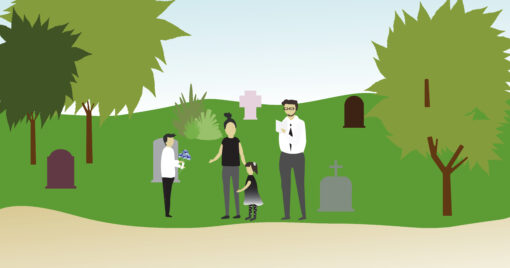
NOTICE TO THE PROFESSION: GUIDANCE ON COVID-19 FOR FUNERAL PROFESSIONALS
March 14, 2020
One of the fundamental and most admired professional roles of a funeral director is the ability to relieve anxiety and stress for families during their time of loss. If ever there was a time for funeral directors to promote calm and reassurance in their interactions with families and their friends, it is now. We are in unprecedented times.
Although there has been much publicity about closures and avoidance of large gatherings, Public Health Ontario advises that the risk to Ontarians remains low.
The purpose of this notice is to make the position of the BAO clear with respect to funerals, visitations, embalming and disposition.
In summary:
- You can still have a visitation and funeral
- Bodies can still be embalmed
- Bodies can be buried, cremated or hydrolyzed
COVID-19
COVID-19 is new and authorities are still learning about it. The virus that causes COVID-19 is thought to mainly spread from close contact (i.e., within about six feet) with a person who is currently sick with COVID-19. The virus likely spreads primarily through respiratory droplets produced when an infected person coughs or sneezes, similar to how influenza and other respiratory infections spread. These droplets can land in the mouths or noses of people who are nearby or possibly be inhaled into the lungs. This type of spread is not a concern after death.
Older people and people of all ages with severe underlying health conditions are at higher risk of developing serious COVID-19 illness.
VISITATIONS and FUNERALS
There is currently no known risk associated with being in the same room at a funeral or visitation service with the body of someone who died of COVID-19.
It may be possible that a person can get COVID-19 by touching a surface or object that has the virus on it and then touching their own mouth, nose, or possibly their eyes. For that reason, family or guests should not touch or kiss the body of someone who has died of COVID-19. There may be less of a chance of the virus spreading from certain types of touching, such as holding the hand or hugging after the body has been prepared for viewing.
When washing the body or shrouding are important religious or cultural practices, families are encouraged to work with their community cultural and religious leaders and funeral home staff on how to reduce their exposure as much as possible. At a minimum, people conducting these activities should wear disposable gloves. If splashing of fluids is expected, additional personal protective equipment (PPE) may be required, such as disposable gown, faceshield or goggles and facemask.
- Post reminders of how to prevent being infected: clean hands often, put a distance between others, stay home if sick, cover coughs and sneezes
- Keep soap dispensers filled in all washrooms.
- Have hand sanitizer (with at least 60% alcohol) readily available at all entrance points.
- Extra tissues readily available.
- Clean and disinfect surfaces frequently.
EMBALMING
For transporting or receiving a body after the body has been bagged, disinfect the outside of the bag with disinfectant. Follow the manufacturer’s instructions for all cleaning and disinfection products (e.g., concentration, application method and contact time, etc.). Wear disposable nitrile gloves when handling the body bag.
Embalming can be conducted. During embalming, follow routine precautions including the use of additional PPE if splashing is expected (e.g. disposable gown, faceshield or goggles and facemask). Wear appropriate respiratory protection if any procedures will generate aerosols or if required for chemicals used in accordance with the manufacturer’s label. Wear heavy-duty gloves over nitrile disposable gloves if there is a risk of cuts, puncture wounds, or other injuries that break the skin.
After removal of PPE, perform hand hygiene by washing hands with soap and water for at least 20 seconds or using an alcohol-based hand sanitizer that contains at least 60% alcohol if soap and water are not available. Soap and water should be used if the hands are visibly soiled.
DISPOSITION
Decedents with COVID-19 can be buried or cremated or hydrolyzed as usual (as per the establishment’s by-laws.)
INFORMATION
The Bereavement Authority of Ontario (BAO) will continue providing a stream of COVID-19 information on our website, blog and social media platforms as it has since Feb. 28. You can access this information from our BAO COVID-19 webpage.
If you have additional questions, please email Registrar@thebao.ca. Thank you all for performing the caring, professional work that you do for people in times of grief and especially at this time.
– Carey Smith, CEO/Registrar, BAO



